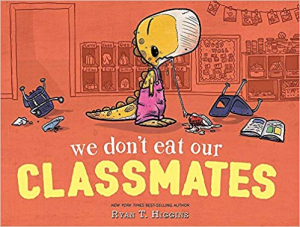
How’s the Voice in Your Query Pitch?
 One of the most common—and detrimental—query mistakes I see these days is loss of voice.
One of the most common—and detrimental—query mistakes I see these days is loss of voice.
I’m not referring to laryngitis. I’m talking about narrative voice: the style, spirit and tone of your manuscript.
This is an easy mistake to make. After all, a query is a business letter, and as such, it’s written according to standard business letter practices: proper formatting, brevity, courteous and professional tone. In a standard business letter, we want that formal tone to be consistent throughout. But the query is a different animal.
Remember that the purpose of a query, especially the pitch (or hook), is to capture the imagination of an agent or editor. Your pitch must provide an overview of your characters, conflict and theme, but most importantly, it must show that you know how to write engagingly for young readers—a task that is at distinct odds with writing a business letter. This means that there must be a necessary difference in voice between your pitch paragraph and the rest of your query.
When you craft a query using a business letter tone and maintain that tone in your pitch it becomes just a dry summary of the story, without utilizing any specifics from the manuscript that make it unique.
Let’s look at this in action:
 We Don’t Eat Our Classmates (NO VOICE)
We Don’t Eat Our Classmates (NO VOICE)
Penelope is a dinosaur who wants to make friends on the first day of school, but she keeps eating them. Eventually she learns what it feels like to have someone try to eat her and she starts to fit in.
It’s silly, but it’s not particularly interesting. It doesn’t tell us what the style or tone of the book is, and it doesn’t capture the spirit of the story. It just tells us the facts.
We Don’t Eat Our Classmates (VOICE)
Penelope Rex wants to make friends, but that proves difficult when she keeps eating her classmates. It’s not until she gets a taste of what it’s like to be chomped on that she loses her appetite for children and starts to fit in.
The characters, conflict and theme are still there, but we’ve got wordplay, we’ve got language from the manuscript and the title, we’ve got specificity of character, we’ve got all kinds of voice-y details that make it reflective of the narrative, the character journey, and the spirit of the book.
This is really key, because you want your pitch to jump off the page. You want it to stand out in contrast to other dinosaur books, let’s say, or other chicken books, or princess books. You want to show what distinguishes your story from any other first day of school story or any other dinosaur story or any other trying to fit in type of story. It shows that you have writing skill, and style, and that you know how to engage a young reader.
In The Complete Picture Book Submissions System, which I co-created with award-winning author & founder of the 12 x 12 challenge, Julie Hedlund, we provide an entire unit on crafting and sharpening your pitch. Writing a strong pitch is so crucial to the success of your submission, that we’re offering a free webinar on Thursday, March 19th called Punch Up Your Pitches! How to Polish Your Picture Book Pitch. You can find all the details here. (Sign up even if you can’t attend live, so you can get the replay.)
In the meantime, here are a few more tips on making your pitch shine from The System:
- Use the distinctive voice, tone and language from your manuscript
- Choose strong, specific and active verbs instead of adjectives and adverbs
- Show, rather than tell, what your book is about
- Write, revise, read aloud, repeat
Just as you would with your manuscript, write your pitch, let it sit, revise, then read it aloud to see if it sings. Repeat as many times as necessary until you are satisfied it’s the best it can be.
I hope you’ll join Julie and me for the Punch Up Your Pitches! webinar on March 19th!
